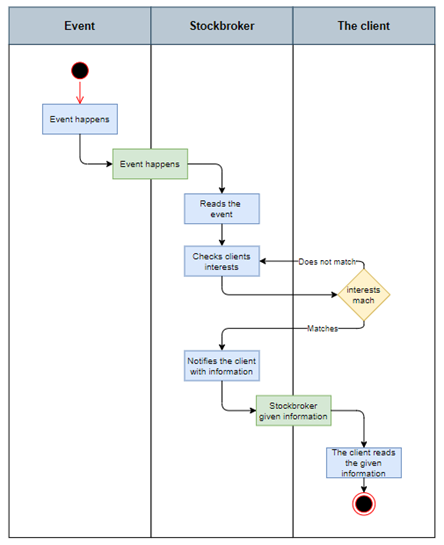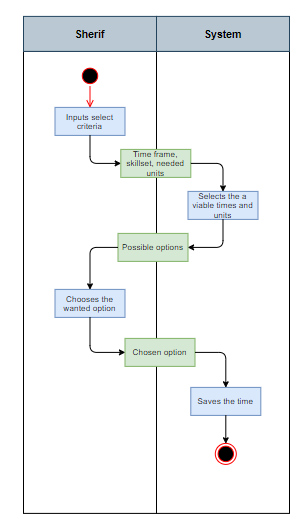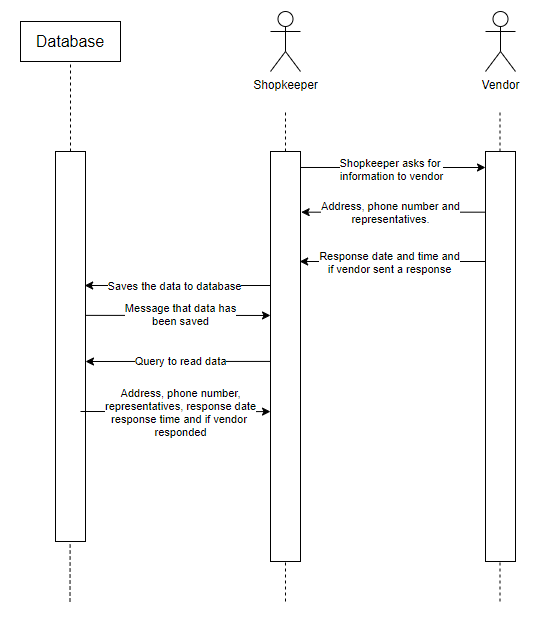Using Object-oriented Techniques to Model A software
Scenario 1: You are a designing software to help stockbrokers manage contacting their clients regularly about their accounts, keeping track of their preferences and any events in the news or the stockmarket that they want assurance or opportunities for. Use our
Object-Oriented techniques to help model this software.
Scenario 2: You are designing software to help police schedule shifts and allow the shift supervisor to quickly assess coverage for the needed workforce levels and skill mix. Use our
Object-Oriented techniques to help model this software.
Scenario 3: You are designing software to help a shopkeeper proactively manage the vendors who they interact with on a regular basis, their addresses, phone numbers, and representatives, and keep notes on their interaction dates and responsiveness. Use our
Object-Oriented techniques to model this software.
UML Diagrams Discussion
When you've finished, discuss the following questions and write a short write-up (200 words) of the following:
What did you find difficult or easy?
What strategies helped?
Submit a zip file that includes the UML diagrams and write up.
Scenario 1
Main functionality points:
1. Keeping track of events
2. Keeping track of the clients preferences
3. Contacting with clients
The best approach for this scenario, in my opinion, would be an Activity Diagram, Because it is probably the most important UML diagrams for doing business process modeling.
This diagram will have 3 columns – representing: Events , The Stockbroker and The Client.
Events include events both in the news and on the stock market
Scenario 2
Main functionality points:
1. Input the criteria for selecting the data from system
2. Choose the appropriate choice
3. Save the chosen time
The best approach for this scenario, in my opinion, would be a Activity Diagram with 2 columns: shift supervisor (sherif for short) and database .
Scenario 3
Main functionality points:
4. Get information from a vendor
5. Track how long it took for the vendor to responf
6. Save data to database
7. Later read the saved data
The best approach for this scenario, in my opinion, would be a Sequence Diagram, because ir represents the data flow between shopkeeper, database (to store data) and vendors
UML Diagrams Write up
What did you find difficult or easy?
I think that the most difficult part was to choose what type of diagram to use. Because each and every one of them do roughly the same thing, but in a different way, that highlights different aspects of the functionality. Next in the scale of difficulty was actually thinking of a way how to show the functionality with the chosen diagram. After that came the first version of the diagram. And finally redrawing the diagram as the final version. But overall the task was not that hard once you get into the rhythm. From all 3 scenarios I think the second one was the hardest to think of.
What strategies helped?
Rereading the scenario multiple times, so I can understand how to implement the described functionality. Experimenting with different diagram types, creating multiple ones and see for myself how much i understand each diagram (if there was more than 1 choice to pick from). I think that UML diagrams are mostly experimental, you rethink the whole diagram with every line you make, so just creating it, adding elements and experimenting is what helps a lot – mostly in the future also when you train your way of thinking in UML.





